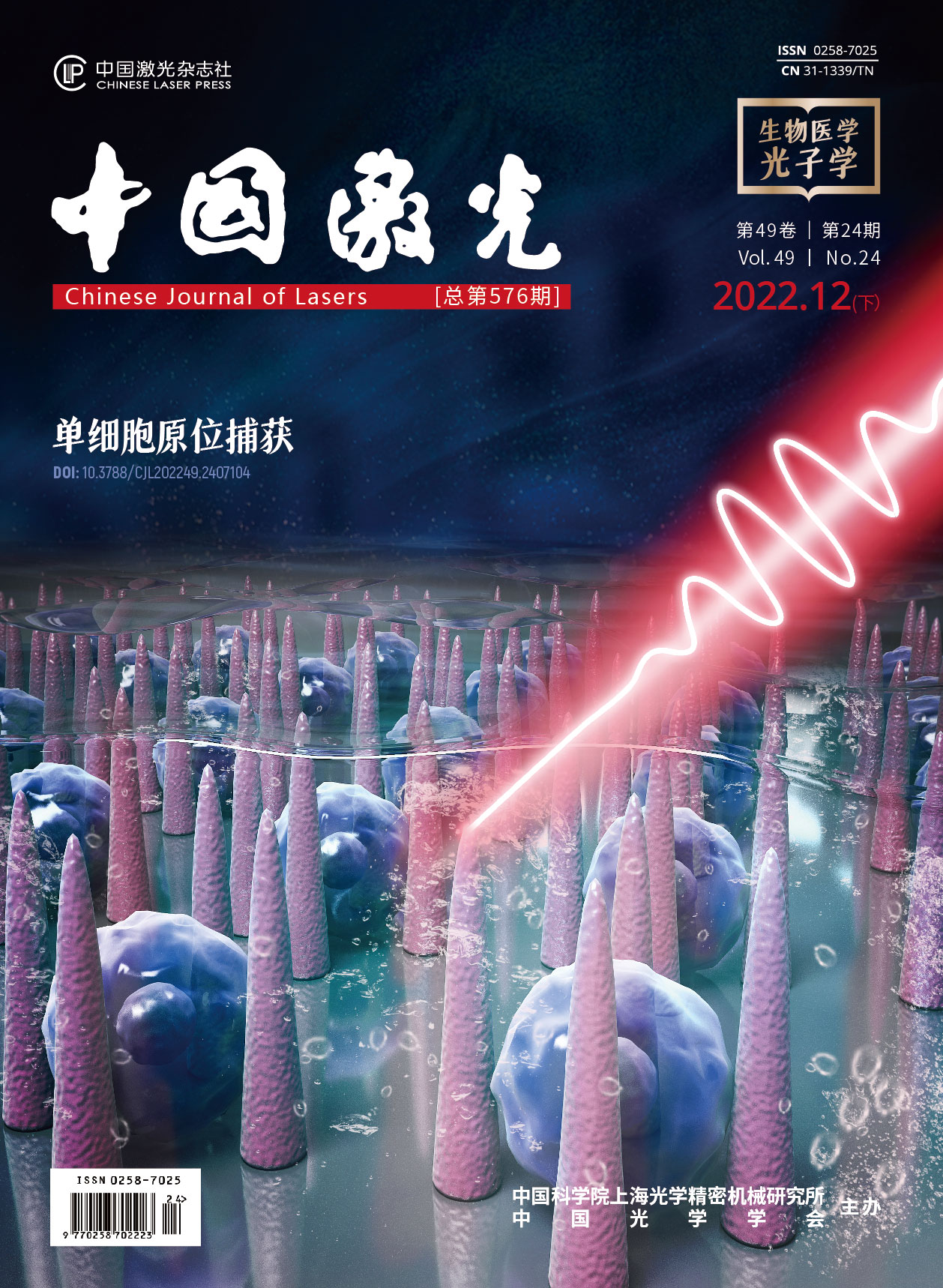基于空间频域成像的烧伤程度无创定量评估  下载: 778次
下载: 778次
The increasing burn mortality rate places an urgent need for accurate diagnosis and treatment of burns. Currently, the third-degree quartile is internationally used to classify the degree of burns based on burn depth, and clinical treatment methods for different degrees of burns are significantly dissimilar. Burn surgeons overestimating the severity of burns can lead to unnecessary surgery, whereas underestimating them leads to treatment delays and worsening of the burn conditions. In addition, studies have shown that burn severity changes dynamically over time, with superficial Ⅱ burn worsening to deep Ⅱ or Ⅲ burns within 48 h of burn occurrence. Therefore, overcoming the defects of subjective judgment using the naked eye and quantitatively monitoring the dynamic changes in the burn degree in real time has become a challenge in the early diagnosis of burns. Burn diagnosis methods based on photonics, such as near-infrared spectroscopy, reflective confocal microscopy, and laser Doppler flowmetry, are developing rapidly. However, their clinical application is limited owing to low accuracy, invasiveness, high detection environment requirements, and high costs. In this study, a noninvasive quantitative method for assessing the burn degree was developed based on spatial frequency-domain imaging (SFDI). Combined with the systematic clustering method and multiparameter dimensionality reduction analysis, the proposed method results in improved classification accuracy of different burn degrees and shortened classification time, thus indicating the potential for early diagnosis of clinical burns.
In this study, the SFDI technique was applied to a rat burn model. First, the backs of Sprague-Dawley (SD) rats were depilated, and a thermostatic iron heated to 100 ℃ was used on the backs of the anesthetized SD rats for 4, 12, and 24 s, respectively, to establish a rat burn model with different burn degrees. Next, the sinusoidally modulated structural patterns were projected onto the surface of each burned area, and the backscattered structural patterns from the tissues were captured using a charge-coupled device (CCD) camera. Subsequently, we used single-snapshot multifrequency demodulation (SSMD) to extract the modulation transfer function (MTF) of light from the burned tissues. Compared with the traditional three-phase shift demodulation method, SSMD only requires a single snapshot to achieve parameter extraction, which significantly suppresses the problem of motion artifacts and improves the signal-to-noise ratio of imaging using filtering technology. Based on the photon diffusion transmission theory, the optical parameters (μa and μ′s) were then recovered using the look-up table method at the 5th, 10th, 30th, 60th, 90th, and 120th minutes after burn. Finally, systematic clustering and multiparameter dimensionality reduction analysis were performed on the optical parameters to quantify and classify different burn degrees.
Different degrees of burns can be effectively distinguished by the relative changes in the two optical parameters at the three wavelengths. The results show that the magnitude of the absorption coefficient positively correlates with the degree of burn. In contrast, the magnitude of the reduced scattering coefficient negatively correlates with the degree of burn. Although the distinction between optical parameters is not significant at the beginning of burns, the optical parameters of the 4 s burn group gradually decrease or gradually recover to the unburned state with observation time. In contrast, the optical parameters of the 12 s and 24 s groups gradually deviate from the normal state (Fig. 6). The burn results are divided into two categories through optimal analysis of systematic clustering. The 4 s group is classified as mild burns, whereas the 12 s and 24 s groups are classified as severe burns. Although the classification accuracy is less than 85% in the first 10 min after burn, it is 100% in the later stages (Table 1). Two new factors (the absorption factor FAC1 and the reduced scattering factor FAC2) reflecting approximately 93% of the original variable information can be generated using the principal component analysis to reduce the dimensionality of the six optical parameters. The results show that the absorption factor, FAC1, distinguishes the degree of burns in a large category (mild burns in the 4 s group and severe burns in the other two groups) and increases the difference between deep Ⅱ degree burn in the 12 s group and Ⅲ burn in the 24 s group. In addition, the assessment of burn severity using principal constituent factors can reduce interference and improve classification accuracy in the early stage after burn (Fig. 9).
The quantitative burn imaging device based on real-time spatial frequency-domain imaging technology has remarkable advantages over existing diagnostic techniques, for example, ease of handling, compact structure, and high precision. Through dynamic monitoring of changes in optical parameters combined with cluster analysis and parameter dimensionality reduction, the degree of burns can be determined through noninvasive assessment, providing a reliable guarantee for the precise treatment of burns. In future studies, we will supplement the pathological verification, characterize additional physiological parameters (such as hemoglobin content, blood oxygen saturation, and melanin concentration) from the optical parameters, and extend this technology to clinical applications so as to significantly reduce the treatment cycle and cost to patients.
钟晓雪, 黄国武, 缪弘波, 胡城豪, 刘威, 孙春容, 陈志华, 李港宁, 曹自立, 金鑫, 林维豪. 基于空间频域成像的烧伤程度无创定量评估[J]. 中国激光, 2022, 49(24): 2407205. Xiaoxue Zhong, Guowu Huang, Hongbo Miu, Chenghao Hu, Wei Liu, Chunrong Sun, Zhihua Chen, Gangning Li, Zili Cao, Xin Jin, Weihao Lin. Noninvasive Quantitative Assessment of Burn Degree Based on Spatial Frequency-Domain Imaging[J]. Chinese Journal of Lasers, 2022, 49(24): 2407205.







